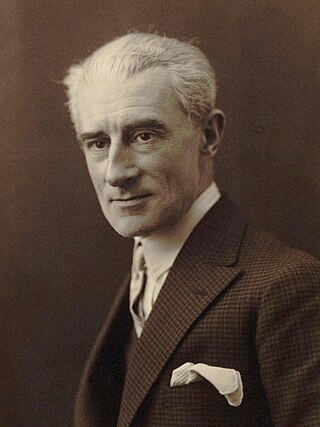
Joseph Maurice Ravel was a French composer, pianist and conductor. He is often associated with Impressionism along with his elder contemporary Claude Debussy, although both composers rejected the term. In the 1920s and 1930s Ravel was internationally regarded as France's greatest living composer.
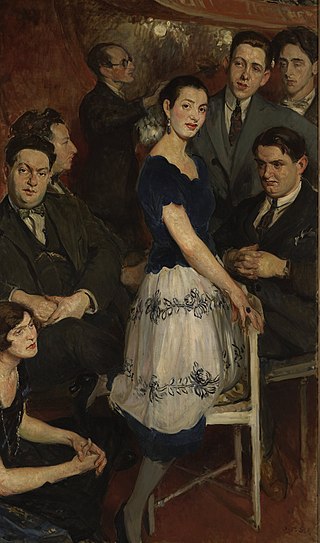
"Les Six" is a name given to a group of six composers, five of them French and one Swiss, who lived and worked in Montparnasse. The name has its origins in two 1920 articles by critic Henri Collet in Comœdia. Their music is often seen as a neoclassic reaction against both the musical style of Richard Wagner and the Impressionist music of Claude Debussy and Maurice Ravel.

Francis Jean Marcel Poulenc was a French composer and pianist. His compositions include songs, solo piano works, chamber music, choral pieces, operas, ballets, and orchestral concert music. Among the best-known are the piano suite Trois mouvements perpétuels (1919), the ballet Les biches (1923), the Concert champêtre (1928) for harpsichord and orchestra, the Organ Concerto (1938), the opera Dialogues des Carmélites (1957), and the Gloria (1959) for soprano, choir, and orchestra.

Roger Désormière was a French conductor. He was an enthusiastic champion of contemporary composers, but also conducted performances of early eighteenth century French music.
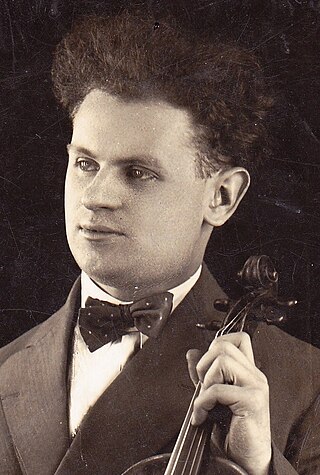
Manuel Rosenthal was a French composer and conductor who held leading positions with musical organizations in France and America. He was friends with many contemporary composers, and despite a considerable list of compositions is mostly remembered for having orchestrated the popular ballet score Gaîté Parisienne from piano scores of Offenbach operettas, and for his recordings as a conductor.
Sandrine Piau is a French soprano. She is particularly renowned in Baroque music although also excels in Romantic and modernist art songs. She has the versatility to perform works from Vivaldi, Handel, Mozart to Schumann, Debussy, and Poulenc. In addition to an active career in concerts and operas, she is prolific in studio recordings, primarily with Harmonia Mundi, Naïve, and Alpha since 2018.
Marcel-François-Georges Delannoy was a French composer and critic. He wrote operas, ballets, orchestral works, vocal and chamber works, and film scores.

The Victoires de la musique classique are an annual French classical music award event founded in 1986. The awards are the classical equivalent of the popular music awards Victoires de la Musique and the Victoires du Jazz. Most of the awards are for actual performers, orchestras, composers, etc. as opposed to the Diapason d'Or given to recordings, though there is an Enregistrement français de musique classique de l'année.
Roger David Edward Nichols is an English musicologist, critic, translator and author. After an early career as a university lecturer he became a full-time freelance writer in 1980. He is particularly known for his works on French music, including books about Claude Debussy, Olivier Messiaen, Maurice Ravel, Francis Poulenc and the Parisian musical scene of the years after the First World War. Among his translations are the English versions of the standard biography of Gabriel Fauré by Jean-Michel Nectoux and of Harry Halbreich's study of Arthur Honegger.
Arsys Bourgogne is a French vocal ensemble. Founded in 1999 by Pierre Cao, it is now directed by Mihály Zeke.
Jean Roy was a French music critic and musicologist, born in Paris.
Yvonne Gouverné, née Yvonne Marcelle Gouverné, was a 20th-century French pianist by training, who went on to become an accompanist and choir conductor.

Trois poèmes de Mallarmé is a sequence of three art songs by Maurice Ravel, based on poems by Stéphane Mallarmé for soprano, two flutes, two clarinets, piano, and string quartet. Composed in 1913, it was premiered on 14 January 1914, performed by Rose Féart and conducted by D.-E. Inghelbrecht, at the inaugural concert of the société musicale indépendante of the 1913–1914 season in the Salle Érard in Paris.

Jean-François Gardeil is a French baritone and theatre director. He is also the founder and artistic director of the Chants de Garonne.
Philippe Cantor is a contemporary French bass-baritone.
Billy Eidi is a French classical pianist of Lebanese background.
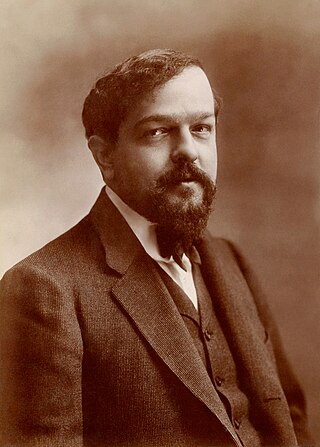
Trois Chansons, or Chansons de Charles d’Orléans, L 99 (92), is an a cappella choir composition by Claude Debussy set to the medieval poetry of Charles, Duke of Orléans (1394–1465). Debussy wrote the first and third songs in 1898 and finished the second in 1908. He premiered the piece in 1909 and Trois Chansons is his only composition for unaccompanied choir.
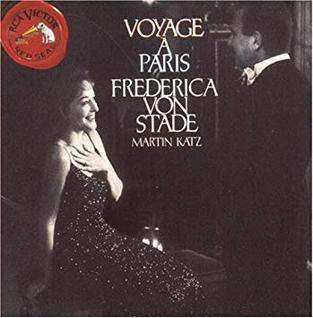
Voyage à Paris is a 70-minute studio album of French art songs performed by Frederica von Stade with piano accompaniment by Martin Katz. It was released in 1995.
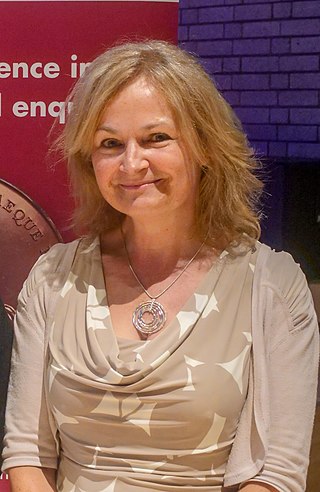
Barbara Lucy Kelly is a musicologist specializing in 19th- and early 20th-century French music, an area in which she is widely regarded as a leading authority. She has dual UK and Irish citizenship. She is the Head of School of Music and Professor of Music at the University of Leeds and is currently the first female President of the Royal Musical Association (2021–2023).

Suzanne Jeanne Marie Peignot, néeRivière, was a French soprano, privileged interpreter of The Six. Her friends nicknamed her la Reine des mouettes, an allusion to one of the melodies she successfully sang. As for him, Erik Satie had nicknamed her ma très petite da-dame.











